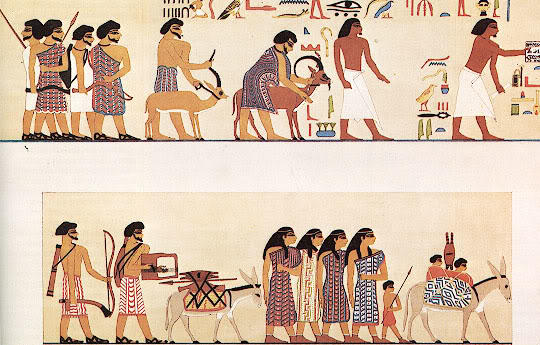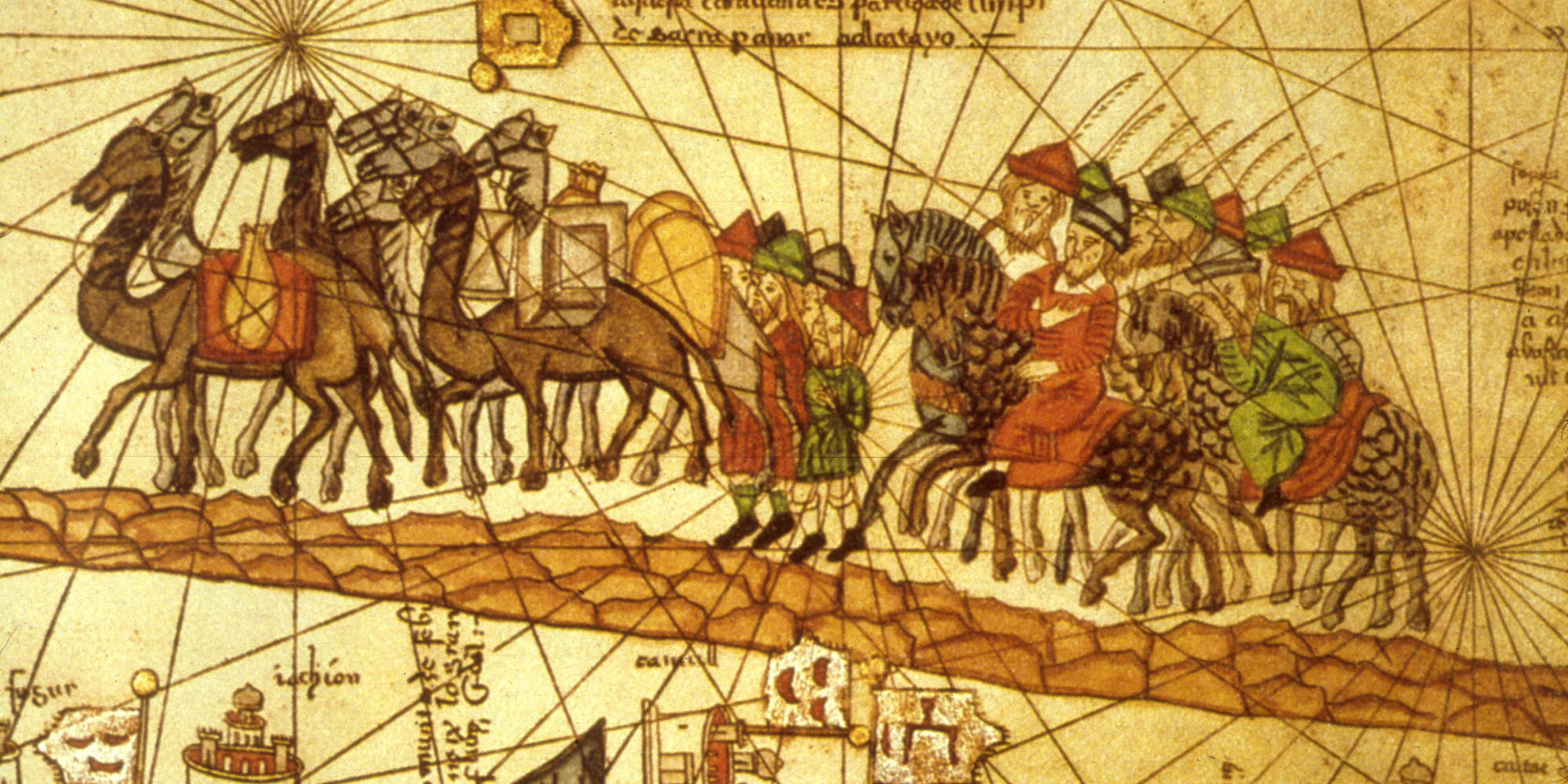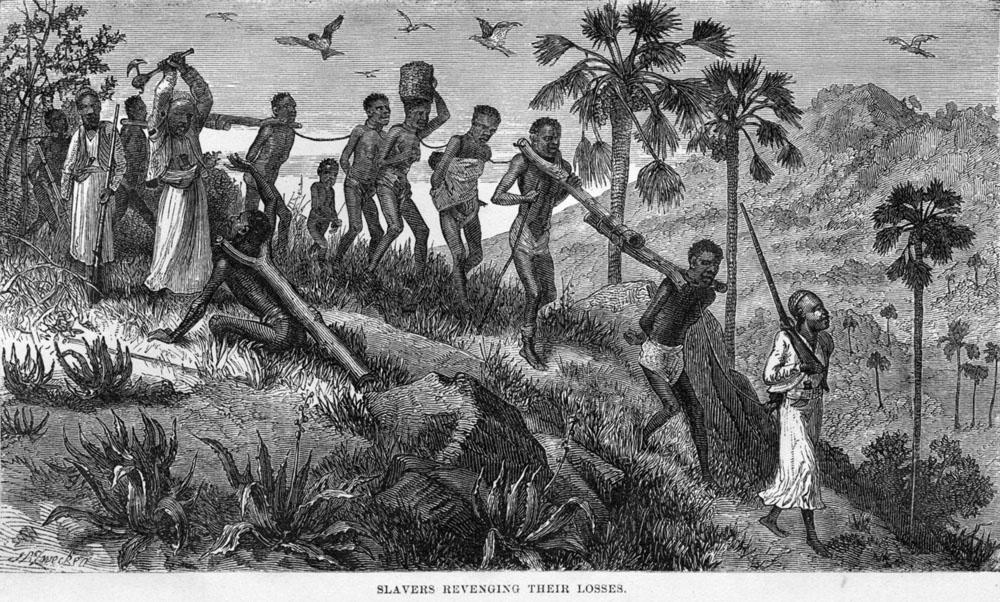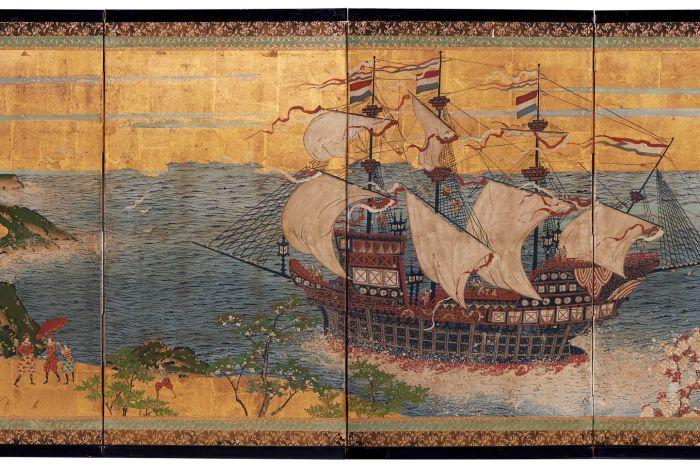Art is an indispensable part of the culture. Art is not always fine art; it might depict rather common scenes from life, showing phenomena that were important for the everyday life of the society which created it. This is why pieces of art can often be important historical artifacts telling us about the particulars of this or that culture. In this paper, we will examine four artworks related to the theme of trade, and see how these artworks reflect the conditions of the society they are related to.
Trading has always been an important part of human civilization. It exists inside communities, where it allows people to exchange goods and services with each other. This is necessary because of specialization and division of labor, and people need to be able to exchange goods or services they produce for things they need and cannot produce or otherwise get on their own.
It also exists between communities, because different communities often focus on production of different goods, and particular communities are not always able to produce this or that type of merchandise because of the lack of resources or other factors.
In addition, some communities might have a comparative advantage in production of this or that type of things, or the means for mass-production, which makes it more beneficial for all if others trade with that community.
Being an important part of society’s life, trading, of course, is captured in many artworks of different peoples and eras. Fig. 1, for example, shows an Ancient Egyptian picture demonstrating Hyksos (with beards), a Semitic people who came to Ancient Egypt during the period of the Middle Kingdom (1800-1640 B.C.E.), bringing the Egyptians tribute and offering goods for trade.

As it was mentioned, trading allowed people to exchange goods that cannot have been produced in particular regions. Clearly, these goods were usually a luxury rather than a necessity. Caravans that carried such merchandise often had to take a long journey of a number of weeks or months, and things they bought and sold in many cases had a high price. Fig. 2 shows a caravan traveling along the famous Silk Road, an ancient system of trade ways that connected the Western world and the Eastern lands. These ways were named after numerous merchants who carried Chinese silk to be sold to the Westerners.

Trading is directly related to making profits, and, unfortunately, this means that various forms of cruelty and injustice are often related to this phenomenon. If they were not born into slavery, people first had to be captured before they became slaves.
This could happen during military conflicts, when the winners took the representatives of the defeated side for their use, or this could happen as a result of direct raids aimed at capturing slaves and selling them in order to make profits. Fig. 3 shows a group of Arabian slavers leading a coffle of slaves from Africa who are to be sold in the market.
The picture also shows the amount of cruelty that accompanied such enterprise; a slaver, being frustrated over the fact that a slave is too slow to keep up with the others, is murdering that person. Apparently, the painter sympathized with the slaves, for the cruel moment of murder and not anything else was chosen to be depicted in this work.

Food is a necessary means of survival, and it is important for any person in any community. If there was a lack of food, people always had to exchange something for it. It is no wonder, therefore, that food also has always been the object of trading relations. In addition to that, there has not always been an abundance of types of food available.
For instance, many vegetables were not available in Europe until some last few centuries; potatoes and tomatoes, for example, were introduced in that region only in the 16th century. The assortment of foods, thus, was quite poor (at least judging from the modern point of view), and certain kinds of food were often especially valued as a luxury. Fig. 4 shows an artwork from circa 1870 depicting a Dutch trading ship near the coasts of Japan.
At that time, ships often crossed the oceans to go to Asian countries and buy a cargo of spices, which were highly valued in Europe and could yield a good price from the richer categories of the population.

As it can be seen, trading has been a part of human civilization since very early ages, and it is no wonder that many episodes of it are reflected in art. The artworks can be important historical evidence, for they often depict important aspects of life of a society, describing various phenomena characteristic of it and allowing us to look into the particulars of this or that culture.
Works Cited
Ancient Egypt: The Hyksos. 2011.
Slave Coffle, Central Africa, 1866. 2012. Web.
‘Spice Age’ Artefacts and Paintings Go on Show at Art Gallery of South Australia. 2015.
Tharoor, Shashi. China’s Silk Road Revival – and the Fears It Stirs – Are Deeply Rooted in the Country’s History. 2014. Web.